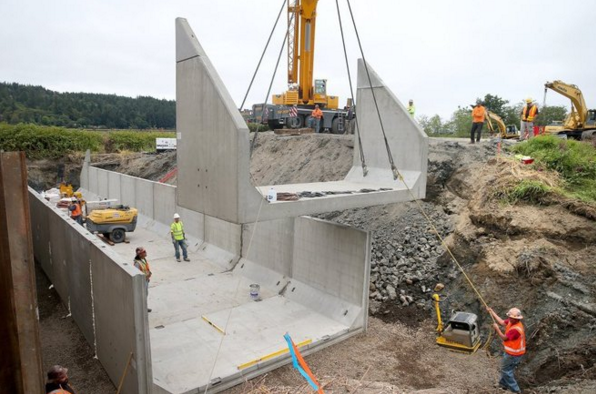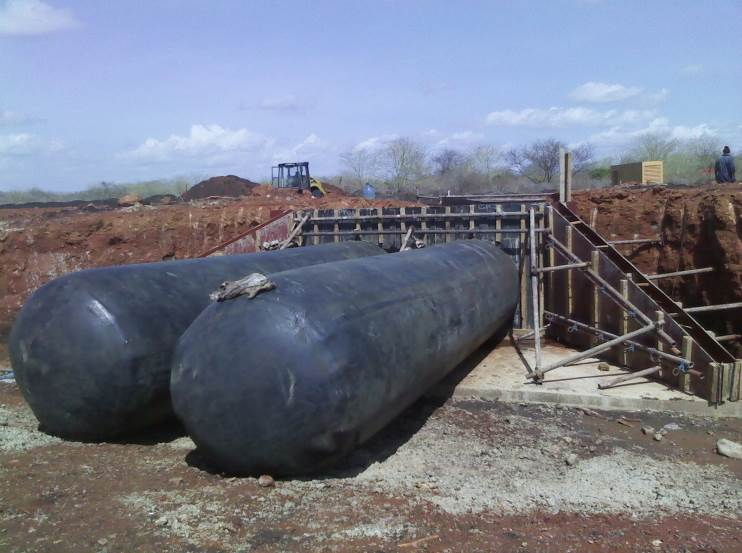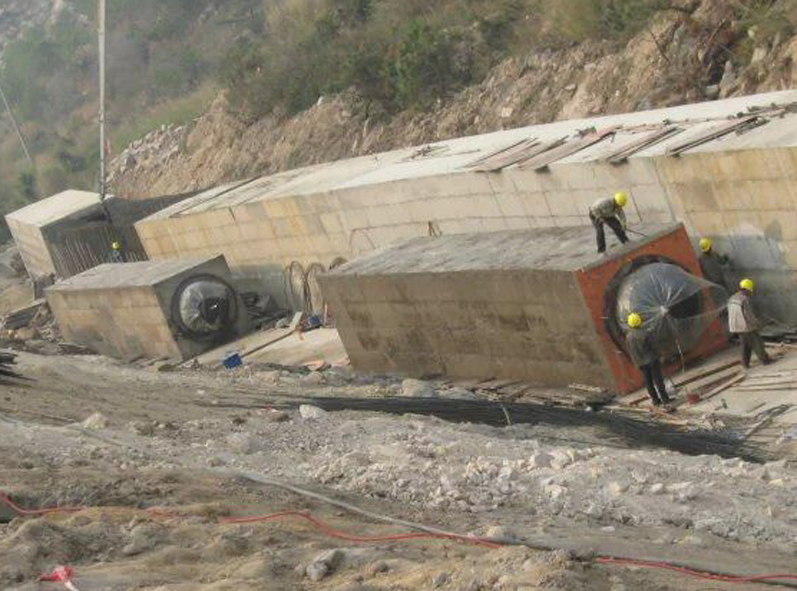
GORST — Drivers flying past at 60 mph might have glimpsed a peek Wednesday at the first of three new Anderson Creek culverts being built.
In the middle of a closed Bay Street, a giant yellow crane lowered concrete sections into a channel carved across the road. Running alongside, the old 5-foot diameter pipe lay exposed, depositing the stream into Sinclair Inlet. Tall metal slats, called sheet piles, formed a rusty wall to hold the old pipe in place and keep dirt out of the new structure.
Before noon, state Department of Transportation contractors Scarsella Brothers lined up nine 50,000-pound sections — 10 feet long, 18 feet wide and 8 feet tall — and two end pieces to form the future creek bed. They grouted the vertical seams and locked the bottoms with metal strips.
On Thursday, they'll spread stream rock on the bottom and install concrete lids.
"We'll backfill the next three days," project manager Michelle Britton said. "This hole will be all filled in by Monday. We're not playing, we're moving."
As workers cover the first culvert, others prepare for the next, which will run under westbound Highway 16, the lanes nearest the bay. Trucks dumped mountains of dirt into a grassy wetland beside the fast lane. A bulldozer smoothed it into a detour lane to arc around the next work area where the speed limit will be reduced to 40 mph.
After the culverts are in place, the site must be restored to its original state.
"It'll be a pristine wetland when we're done," Britton said. "You will never know anyone was here in November, except the pavement will be black."
Two existing concrete pipe culverts — 146 feet and 210 feet — are being replaced by three four-sided box culverts — 95 feet, 128 feet and 67 feet — to make it easier for migrating chinook and chum salmon. Generally, new culverts have a top and sides and the ground comprises the bottom, but the soil here is too wet.
"See that mountain of goo over there?" Britton asked about a pile of stinky, gray soil. "That is why we have box culverts."
The middle culvert is being installed first because it doesn't require working in the water, which isn't allowed until the fish window opens in July.
A federal-court case established in 2013 that Washington has a treaty-based duty to preserve fish runs and must repair or replace culverts that impede salmon migration.
The creek emerges from one of the pipes for about 10 feet before plunging into the other.
"Trying to put a whole creek through a 5-foot pipe is going to speed up the water (and make it tougher for fish to get through)," Britton said.
The detour lane could be temporarily paved as early as next week. Once Phase 1 is completed, Bay Street (Highway 166) will be opened for westbound traffic but the eastbound side will remain closed for another month.


